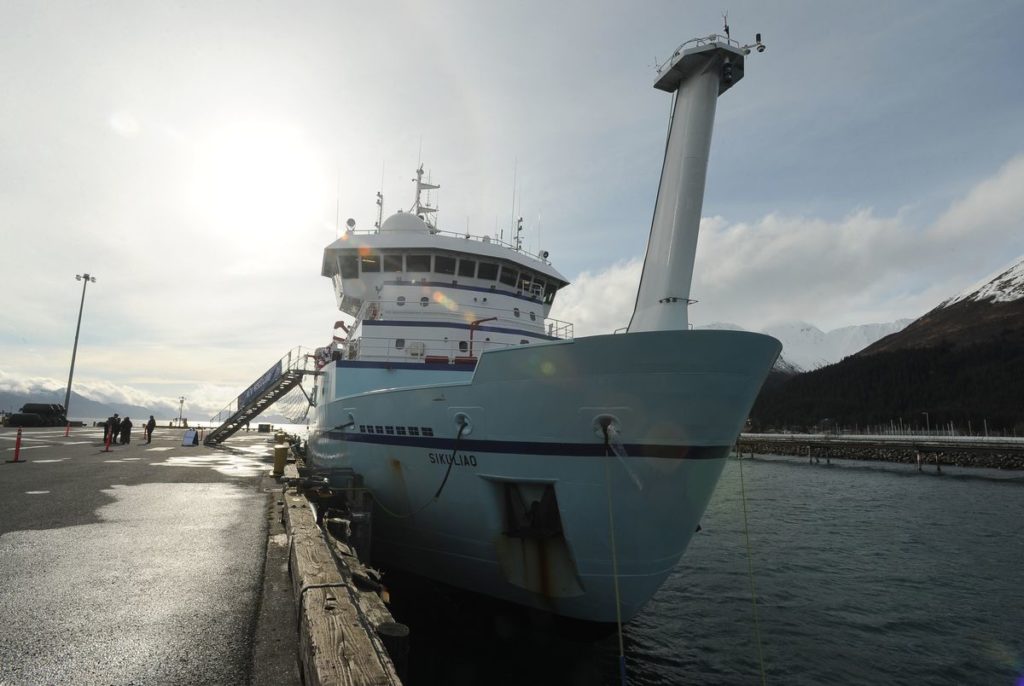Located at the mouth of Resurrection Bay near Seward, Alaska, temperature and salinity versus depth profiles have been taken at oceanographic station GAK1 since December, 1970. This multi-decade time series is one of the longest running oceanographic time series in the North Pacific, and this month marks it’s 50th anniversary.
Data is the lifeblood of science. It provides scientists with a way to prove, refine, or disprove our ideas about how the world works. Data from the University of Alaska Fairbanks is providing valuable information for oil spill response, public safety and economic development efforts in the 49th state.
UAF passed a remarkable milestone this month, when scientists from the College of Fisheries and Ocean Sciences completed a half-century of regular observations at a Gulf of Alaska oceanographic station. Station GAK-1 is located near Seward at the mouth of Resurrection Bay, and it has the longest set of sustained measurements of surface-to-seafloor temperature and salinity in all of Alaska’s coastal and offshore waters.
What does this mean for our state? GAK-1 is providing data to drive good decision-making and help us evaluate risks to Alaska’s marine ecosystem and economy as the ocean becomes warmer and more acidic due to climate change. This monitoring contributes to our understanding of melting glacier runoff in the ocean, variations in Alaska’s commercial fisheries, and the population status of marine mammals.
The entire Anchorage Daily News opinion piece written by GulfWatch Alaska PI Seth Danielson can be accessed here.



